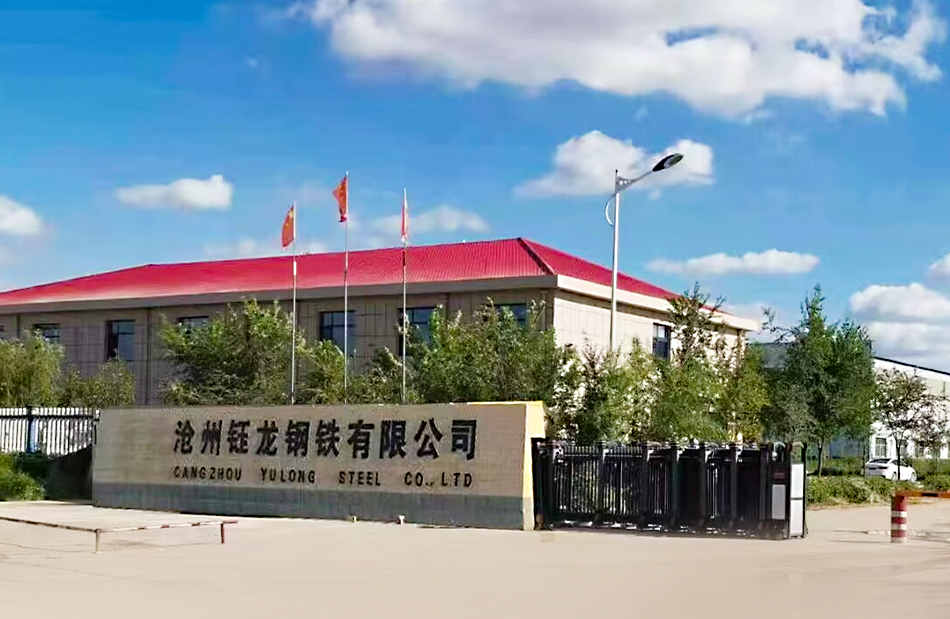-
Cangzhou Yulong Steel Co., Ltd.
-
Phone:
+86 13303177267 -
Email:
admin@ylsteelfittings.com
- English
- Arabic
- Italian
- Spanish
- Portuguese
- German
- kazakh
- Persian
- Greek
- French
- Russian
- Polish
- Thai
- Indonesian
- Vietnamese
- Zulu
- Korean
- Uzbek
- Hindi
- Serbian
- Malay
- Ukrainian
- Gujarati
- Haitian Creole
- hausa
- hawaiian
- Hebrew
- Miao
- Hungarian
- Icelandic
- igbo
- irish
- Japanese
- Javanese
- Kannada
- Khmer
- Rwandese
- Afrikaans
- Albanian
- Amharic
- Armenian
- Azerbaijani
- Basque
- Belarusian
- Bengali
- Bosnian
- Bulgarian
- Catalan
- Cebuano
- China
- China (Taiwan)
- Corsican
- Croatian
- Czech
- Danish
- Esperanto
- Estonian
- Finnish
- Frisian
- Galician
- Georgian
- Kurdish
- Kyrgyz
- Lao
- Latin
- Latvian
- Lithuanian
- Luxembourgish
- Macedonian
- Malgashi
- Malayalam
- Maltese
- Maori
- Marathi
- Mongolian
- Myanmar
- Nepali
- Norwegian
- Norwegian
- Occitan
- Pashto
- Dutch
- Punjabi
- Romanian
- Samoan
- Scottish Gaelic
- Sesotho
- Shona
- Sindhi
- Sinhala
- Slovak
- Slovenian
- Somali
- Sundanese
- Swahili
- Swedish
- Tagalog
- Tajik
- Tamil
- Tatar
- Telugu
- Turkish
- Turkmen
- Urdu
- Uighur
- Welsh
- Bantu
- Yiddish
- Yoruba

Nov . 08, 2024 08:13 Back to list
Overview of ANSI Class 300 Flange Specifications and Applications
Understanding ANSI Class 300 Flanges Specifications and Applications
Flanges are essential components in piping systems, used to connect two sections of pipe or to connect pipelines to valves, pumps, and other equipment. Among the various types of flanges available, ANSI Class 300 flanges hold significant importance due to their robust design and suitability for a wide range of applications. This article explores the specifications, features, and common applications of ANSI Class 300 flanges.
Specifications of ANSI Class 300 Flanges
ANSI (American National Standards Institute) class flanges are categorized based on pressure-temperature ratings. The designation Class 300 refers to the pressure rating of the flange at a certain temperature. Specifically, ANSI Class 300 flanges can handle a maximum pressure of 300 pounds per square inch (psi) at a standard temperature of 100°F.
The materials commonly used for ANSI Class 300 flanges include carbon steel, stainless steel, and alloy steel. The choice of material often depends on the application and the environmental conditions the flange will be exposed to. For instance, stainless steel flanges are preferable in corrosive environments due to their resistance to rust and corrosion.
The dimensions of ANSI Class 300 flanges conform to the specifications outlined in the ASME B16.5, which governs the dimensions, tolerances, and pressure-temperature ratings for flanges. Typically, these flanges feature a thicker design, which enhances their strength and ability to withstand higher pressures. The bolt holes are also designed to align with standard bolts, making installation straightforward and efficient.
Features of ANSI Class 300 Flanges
One of the key features of ANSI Class 300 flanges is their versatility. They can be used in a variety of configurations, including slip-on, blind, threaded, and socket weld flanges. This adaptability allows engineers and designers to select the appropriate type of flange based on the specific requirements of their project.
ansi class 300 flange

Furthermore, ANSI Class 300 flanges are equipped with gaskets that create a tight seal, preventing leaks and enhancing the overall integrity of the piping system. The flanges are designed to be bolted together using standard bolts, which helps in achieving a necessary clamping force to maintain the seal under varying pressure conditions.
Another notable characteristic is the ability of ANSI Class 300 flanges to withstand high temperatures. This feature makes them suitable for applications in industries such as oil and gas, chemical processing, and power generation, where high-pressure and elevated-temperature conditions are commonplace.
Applications of ANSI Class 300 Flanges
Due to their robust nature, ANSI Class 300 flanges are widely employed in various industries. In the oil and gas sector, they are used in both upstream and downstream operations for connecting pipelines, valves, and other critical equipment. Their strength makes them ideal for transporting crude oil, natural gas, and other fluids under high pressure.
In the chemical industry, these flanges play a vital role in systems that require the handling of corrosive and hazardous materials. Their ability to resist chemical reactions ensures operational safety and efficiency.
Moreover, ANSI Class 300 flanges are found in power plants, where they connect steam lines and other high-pressure systems. The reliability and durability of these flanges are paramount in ensuring continuous operation and safety in such critical infrastructures.
In summary, ANSI Class 300 flanges are an integral part of modern piping systems. Their robust design, compatibility with various materials, and exceptional pressure-temperature ratings make them suitable for diverse industrial applications. Understanding these flanges’ specifications and features can help engineers and designers choose the right components for their projects, contributing to safer and more efficient operations in various sectors.
Latest news
-
ANSI 150P SS304 SO FLANGE
NewsFeb.14,2025
-
ASTM A333GR6 STEEL PIPE
NewsJan.20,2025
-
ANSI B16.5 WELDING NECK FLANGE
NewsJan.15,2026
-
ANSI B16.5 SLIP-ON FLANGE
NewsApr.19,2024
-
SABS 1123 FLANGE
NewsJan.15,2025
-
DIN86044 PLATE FLANGE
NewsApr.19,2024
-
DIN2527 BLIND FLANGE
NewsApr.12,2024
-
JIS B2311 Butt-Welding Fittings LR/SR 45°/90° /180°Seamless/Weld
NewsApr.23,2024











